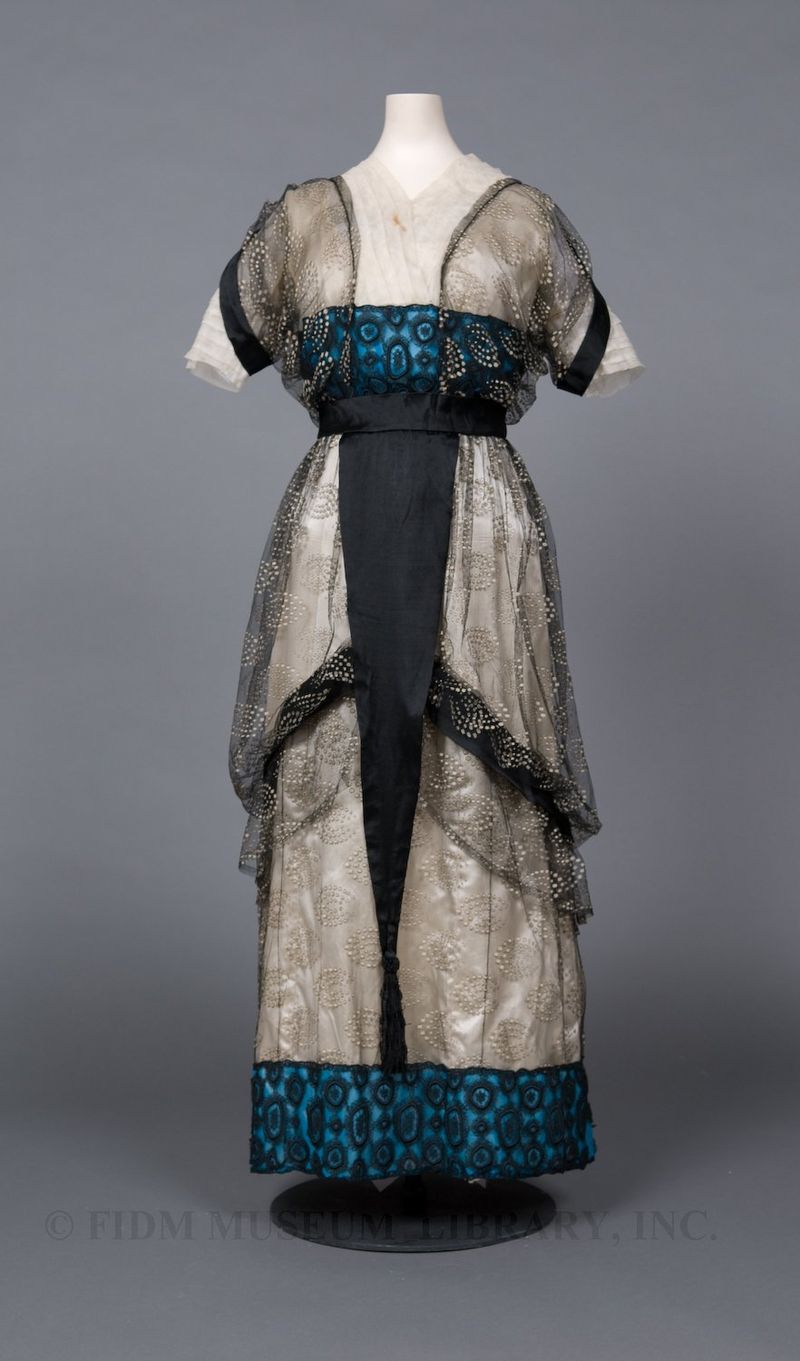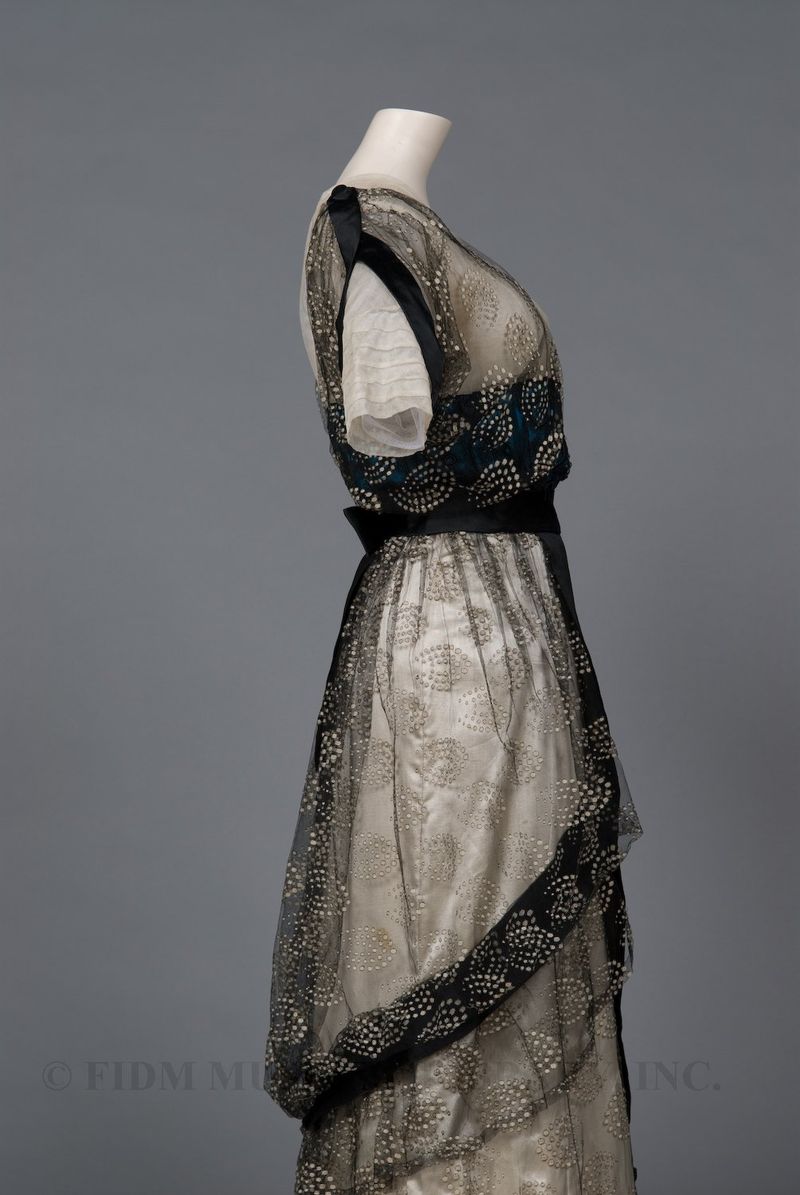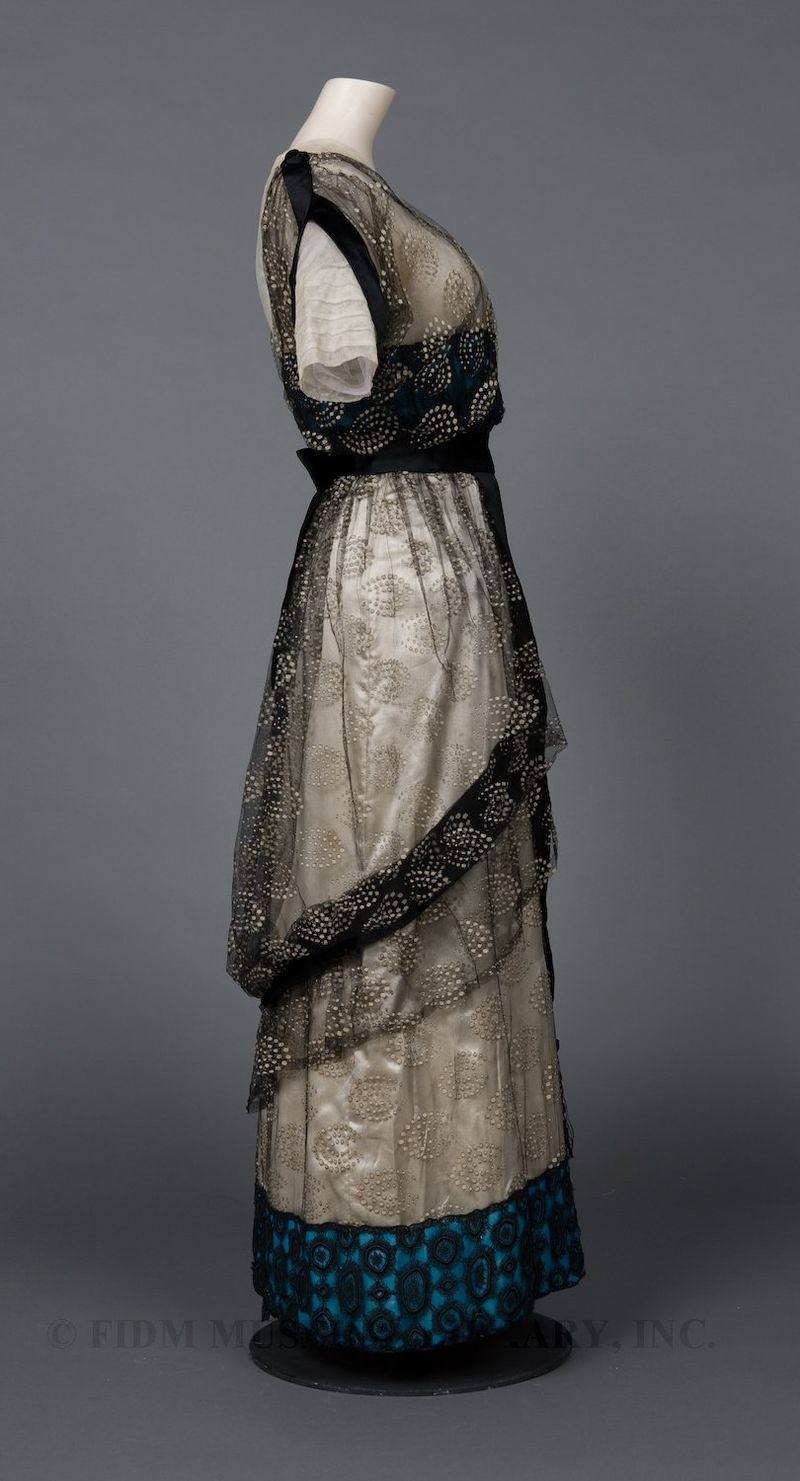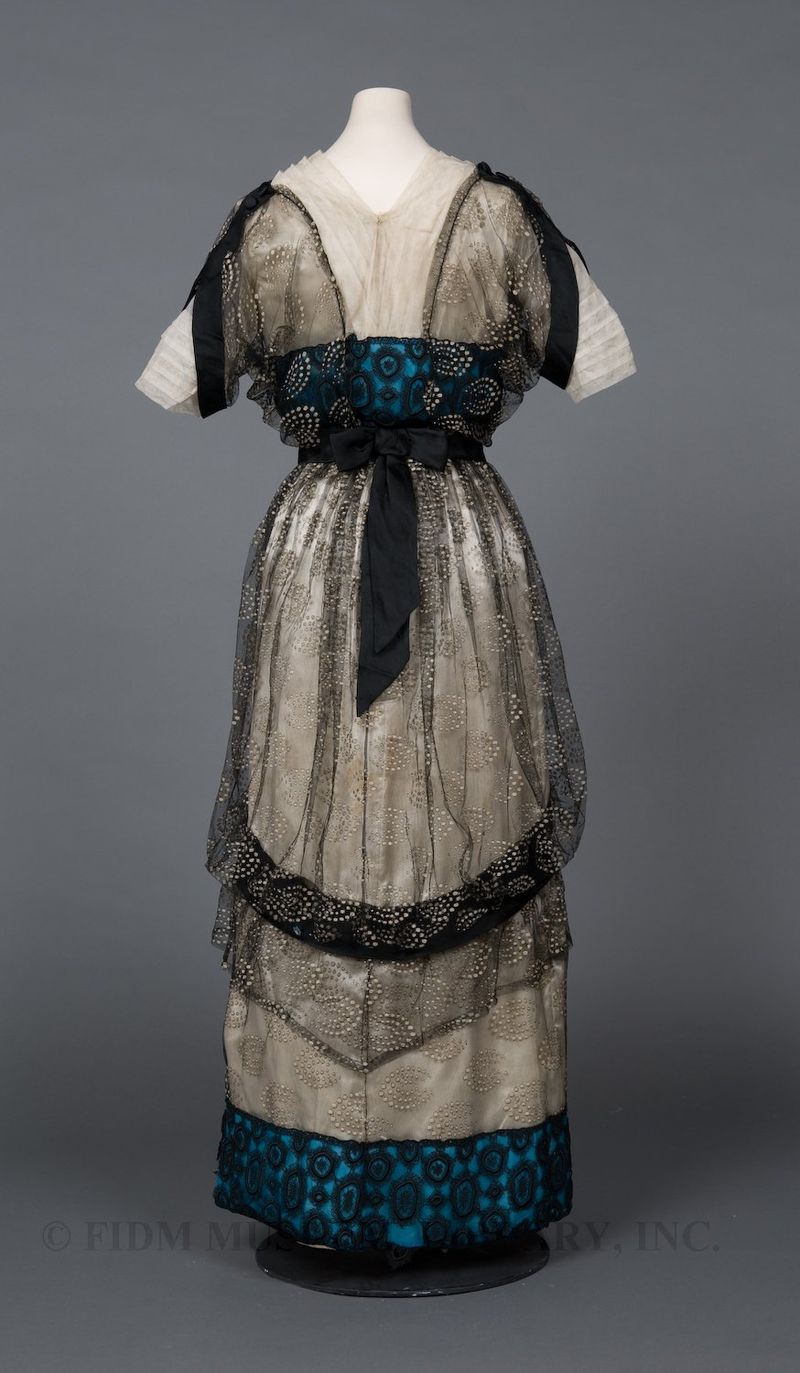Tunic dress, c. 1912
In 1912, fashionable dress was a combination of classical and orientalist elements. The silhouette was slim and high-waisted with an emphasis on the vertical line. A draped surplice bodice, waist sash or overtunic provided the requisite touch of drapery. These elements were drawn from ideas of ancient Greek and Roman dress as filtered through the Directoire style (itself a revival of Greek and Roman dress) of late eighteenth century France. Conceptions of Middle and Far Eastern dress were expressed through the popularity of jewel-toned textiles. Popular accessories, including jeweled and feathered turbans, also borrowed heavily from the Far and Middle East.
 Tunic dress c. 1912 Museum Purchase 2000.5.1
Tunic dress c. 1912 Museum Purchase 2000.5.1
Structurally, classical and orientalist dress shared a lack of emphasis on re-shaping the human body. This was dramatically different from western dress, which for centuries had focused primarily on forcing the body into the desired silhouette through careful shaping or rigid understructure. Though this particular element of classical and orientalist dress had enjoyed sporadic and/or subcultural popularity for many centuries, it started to gain widespread popularity about 1908-9. This was perhaps a response to the highly stylized S-bend (bust forward, hips back) silhouette popular from 1900. This interest in the (somewhat) natural body meant that fewer undergarments were required to achieve the fashionable silhouette. With the popularity of the slim line, fewer petticoats were necessary. One-piece slips, composed of a camisole top and slim petticoat, became popular. Though many women continued to wear corsets, they became gradually less restrictive. Paul Poiret often claimed the credit for this more "liberated" style of dress, but it would be more accurate to say that he capitalized on an existing trend towards more freedom of movement in dress. Though Poiret might have overstated his role in creating this less-restrictive silhouette, his aesthetic was extremely influential. The FIDM Museum dress seen here, though lacking any information about maker or origin, borrows heavily from Poiret's designs of the same period.
The evening dress seen here adheres closely to fashion descriptions and illustrations dating to c. 1912. A December 1911 article in Harper's Bazaar described the popularity of "the draped surplice bodice with the V-shaped yoke [and] elbow-length sleeves."1 Both day and evening dresses featured tunics, though tunics on evening dresses were often of sheer chiffon, sometimes embellished with beads or spangles. The black chiffon tunic on this dress is decorated with white polka-dots, placed in concentric circles. As demonstrated here, the sheer tunic creates a rich, layered effect, a hallmark of orientalist dress. It also softens what could otherwise be a severely vertical silhouette.
Both the hem and waist of the dress are banded by turquoise chiffon with an overlay of black lace. The dress would hit at the instep, not quite covering the foot entirely. This length was considered more youthful than a floor-length trained evening dress and required matching slippers. In a January 1912 article title "Inexpensive Frocks," Harper's Bazaar encouraged young women to not shy away from the cost of an extra pair of slippers, which would ideally match the gown. If a matching pair were too expensive, black slippers worn with black stockings were a "safe substitute."
 Side view of 2000.5.1 1 "New Evening Gowns." Harper's Bazaar Dec. 1911: 45.
Side view of 2000.5.1 1 "New Evening Gowns." Harper's Bazaar Dec. 1911: 45.

